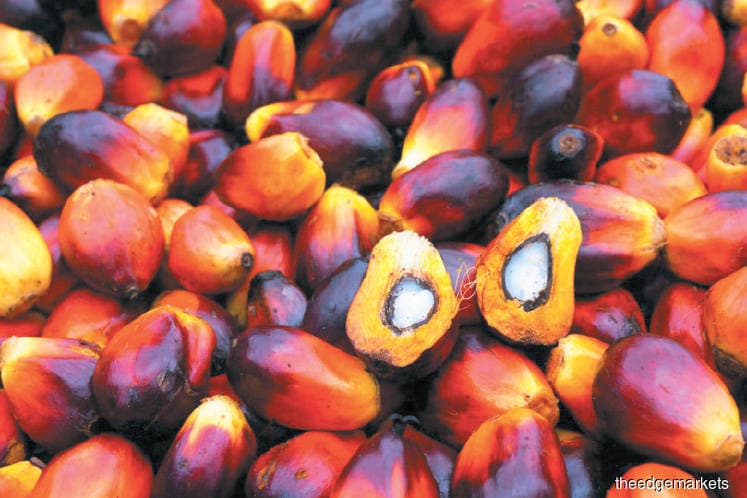
KUALA LUMPUR (Oct 19): Palm oil production in the world’s top growers may not live up to estimates after all, according to industry veteran Dorab Mistry.
After boosting Malaysian output estimates this year to between 19.8 million and 20 million metric tons in September, Mistry on Wednesday cut his forecast for the world’s second-biggest grower to 19.1 million to 19.3 million tons. He trimmed his expectations for top producer Indonesia to 34 million to 34.5 million tons from 34.5 million to 35 million tons.
The revisions see world palm oil production rising by only 4.5 million tons this year compared with earlier projections of an almost 7 million ton increase. That may help prices extend this half’s rally as an expected recovery in yields from El Nino missed forecasts.
“Production has not matched our ideas," Mistry, Director at Godrej International Ltd., said in notes for a speech at a conference in Bogota. Output in most of Malaysia likely peaked in July this year and “in Indonesia also, the trees appear to be slowing down in their output in the second half of the year,” he said.
Data from the Malaysian Palm Oil Board show output soared 21 percent in July from June, before declining in August and September. August production in Indonesia increased 5.3 percent to 3.95 million tons, the highest since at least January 2016, and exports surged to the most in at least nine years.
Palm oil exports are "running well ahead of last year," as the tropical oil’s significant price discount to soyoil and sunoil helps stimulate demand and keep inventories in check, Mistry said.
Price Rally
The weak production recovery has led to a lower build-up in inventories and the industry will soon get confirmation that peak stockpiles in Malaysia will not exceed 2.3 million tons by January, Mistry said.
Next year “stocks will decline month after month all the way to July 2018 and we shall have a period of the tightest ever stocks in history,” said Mistry, who has traded vegetable oil for three decades.
Crude palm oil prices in Rotterdam will rise more than 10 percent from current levels to $800 a ton by January, and may climb further to $850 by March if there are no bumper oilseed crops from South America, Europe, as well as Ukraine and Russia.
Malaysia’s production may rise to 19.97 million tons in 2018, Mistry said. That would exceed the record 19.96 million tons reached in 2015. Indonesian output may climb to 36.5 million to 37 million tons.
In Mistry’s other forecasts:
* Chinese palm oil imports will remain strong after rapeseed oil was sold from reserves, funds may lift prices in the first quarter
* India’s 2017-18 edible oil imports seen rising to 15.9 million tons from 15.25 million tons a year earlier, compared with forecast of 15.5 million tons given in September
* World 2017-18 edible oil demand forecast raised to 6 million tons from 5 million tons predicted in September and matching a 6 million ton gain in 2016-17
** Total supply seen rising by 7.5 million tons from a 7.1 million ton increase the previous year and compared with earlier forecast of a 8 million ton increase
* “Biggest cloud” hanging over the vegetable oil market is whether the Trump administration will reduce the biofuel mandate
** If biodiesel mandates aren’t reduced, Chicago soyoil futures should recover and cash prices of soyoil FOB Argentina may rise to $800 a ton by January
** Soyoil price forecast doesn’t take into account bullish impact from any La Nina-related drought in Argentina or southern Brazil
** World biofuel energy demand may increase 2 million to 3 million tons in 2017-18 from a 3 million ton expansion in 2016-17, depending on U.S. decisions
* Crude palm kernel oil to remain at around $1,300 a ton until March, prices may rise slightly between April and June before declining to $800 to $1,000 CIF Rotterdam from July
* Assumptions are based on Brent crude oil at $45 to $65 a barrel, U.S. Federal Reserve to raise interest rates periodically from December, stronger U.S. dollar against currencies in Brazil, Argentina, India, Pakistan, Bangladesh, no major trade disruptions